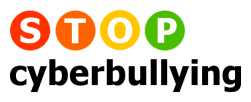"Internet Censorship" Calvin.edu. "Competing Interests: A Rationale for the Resnet filter" by Shirley V. Hoogstra, Freedom of Expression: Filtering and Censorship by Joel Adams, written by Steve Vanderleest and Jeffrey Nyhoff, 2005 Calvin College
Summary: The internet provides easy and anonymous access to explicit materials, many institutions have implemented the use of internet filtering. Some filters use a list of key words and others use embedding codes to determine whether or not the website contains explicit materials. Things that are censored include sexually explicit materials, hate words, things that incite violence or depict the use
of weaponry. Those who are against the use of filtering software claim that it blocks individual freedom to access full information, it also violates the author's right to freedom of speech and can lead to technical difficulties. It can block sites that are actually educational because they contain explicit language, such as blocking a site about breast cancer because it contains the word breast. It can also fail to block access to sites that really are explicit, cause slow internet connection and cause difficulty connecting to certain internet modules. Advocates of filtering software claim it causes employees to slack off at work and prevents students from viewing explicit materials in schools and also claimed that it is the right of the owner of the equipment to determine how it is used.
assessment: Though I do not know the credentials of the people who wrote this but they did seem to have good resources and their material seemed to be factual and up to date
evaluation: I would say that overall this was a good article to use for the subject matter. I think it gave a good definition of what censorship and filtering software means and it gives good points about what the pro and cons are for internet filtering and censorship.
"Internet Censorship in Schools is too Restrictive" Yahoo.com Becca Swanson Yahoo contributor October 11,2011
summary: Web filtering blocks multiple categories of content and limits access to potential educational software. These include video sites, blogs, media sites, auction, shopping and games. One Chicago area teacher area librarian recalls how censorship has limited students access to materials, citing how one student had difficulty finding information about military weaponry. The author of the article, Becca Swanson, who is an art teacher has multiple problems using internet tools in her classroom. She is unable to access certain information on the internet about different artists or types of art and not being able to access instructional videos on youtube. It also limits things like blogging and e-mail. Swanson believes that each school should have an agreement in place with it's students about how to use the internet and they understand that if they don't follow the rules there will be consequences.
assessment: I think the author of this article knows what she's talking about because she is an actual teachers and knows from personal experience the effects that filtering software has in the classroom.
evaluation: I think that this is a good article because not only is it more credible than the other one but it also gives some first hand examples of reasons why censorship is harmful in school.
<iframe width="420" height="315" src="
http://www.youtube.com/embed/97GcS6JRBw4" frameborder="0" allowfullscreen></iframe>















